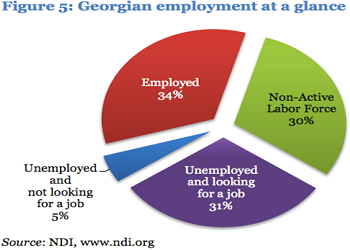After the break-up of the Soviet Union, Georgia went through a process of civil war and economic collapse. Official estimates suggest that Georgia’s GDP shrunk by more than 70% between 1990 and1994.Internal displacement and migration, primarily to Russia, were essential to the nation’s physical survival during this period. Three distinct phases of Georgia’s external migration may be distinguished.
Based on data from the last two censuses held in Georgia, between 1989 and 2002, about 1 million emigrants permanently left Georgia (roughly 20–25% of the total population). This figure includes a very large number of non-Georgian ethnic minorities, including Jews, Russians, Armenians and Greeks. Mansoor and Quillin (2007, p.33) suggest that Georgia holds third place (after Albania and Kazakhstan) among the 25 East European and FSU nations in the share of population lost to emigration.
While the first phase of migration involved a very large ethnic component, the second wave, between 1995 and 2003, was mainly motivated by the search for better economic opportunities abroad. Outflows remained substantial, if somewhat smaller than in the initial phase. The United Nations’ (2009, p.183) global migration assessment for 2006 put net emigration from Georgia between 1995 and 2005 at 598,000 people. Georgia’s economy was growing at about 5% per year during this period. However, productivity remained very low, pushing people into emigration to Russia and other destinations, including Western Europe (particularly Greece) and North America.











